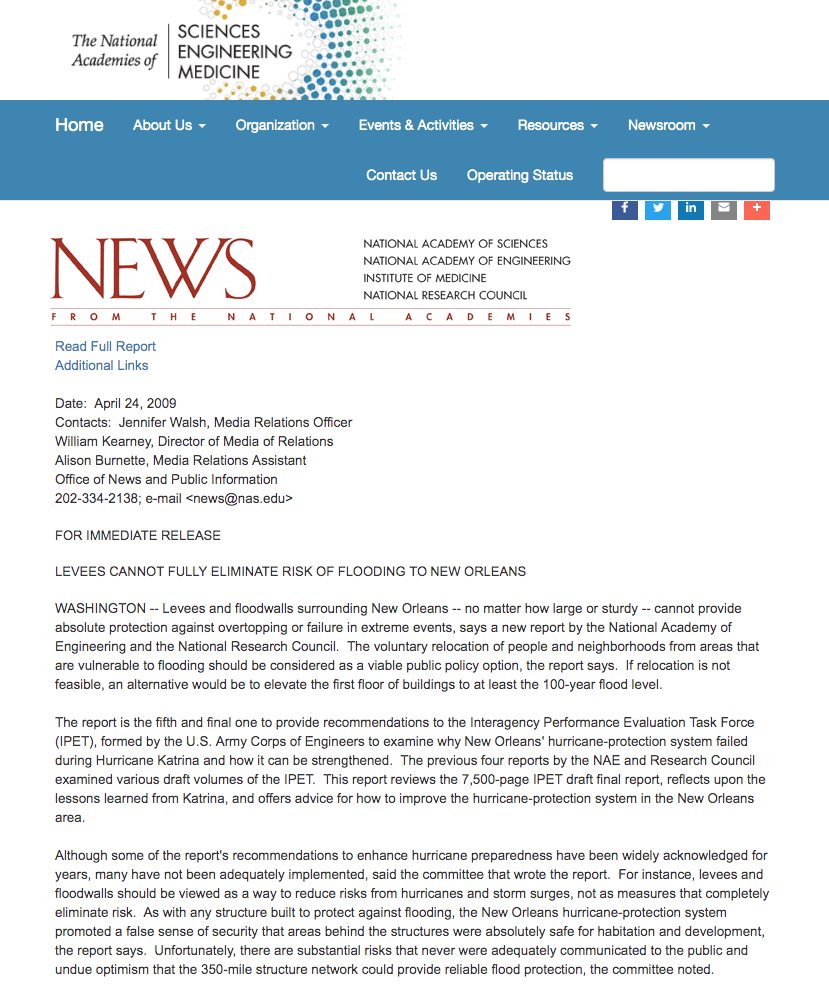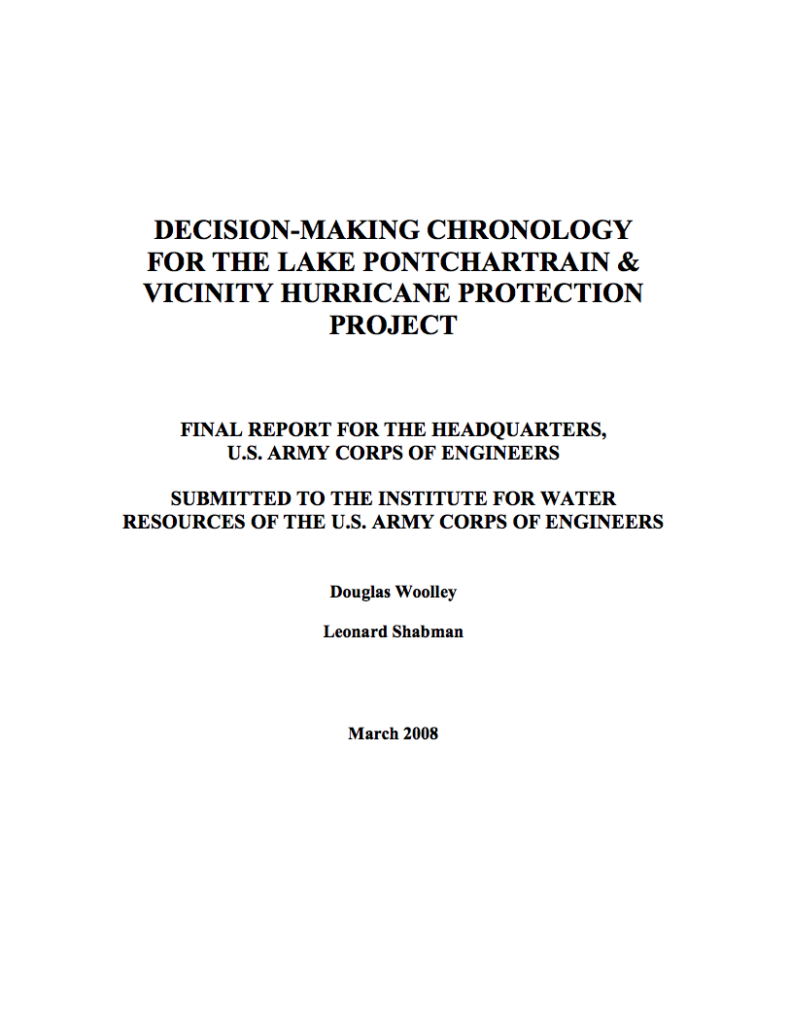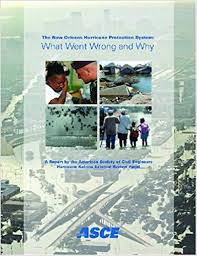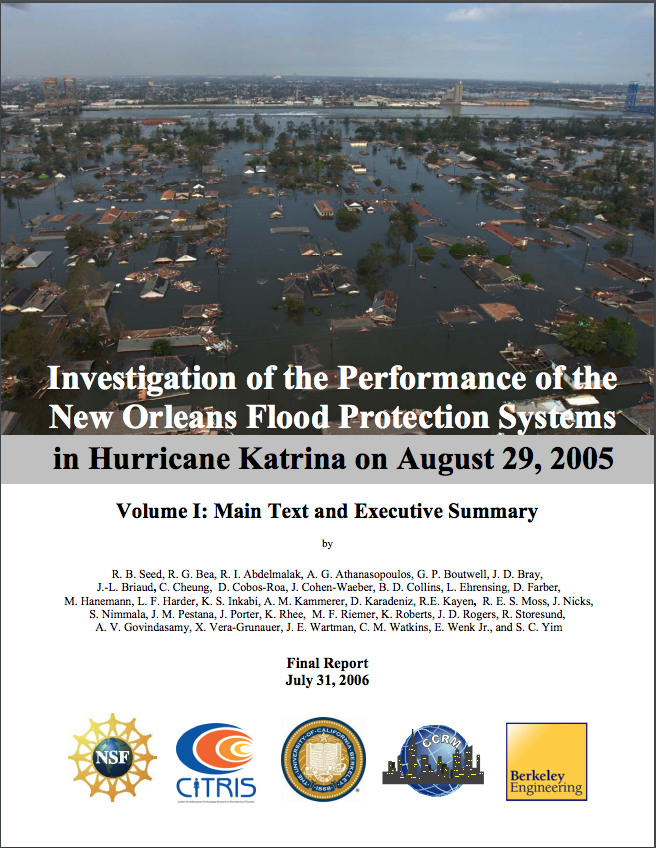(listed in chronological order by publish date)

Interaction between the US Army Corps of Engineers and Orleans Levee Board preceding the drainage canal wall failures in New Orleans – March 2015
J. David Rogers, Paul Kemp, H.J. Bosworth, Jr., and Raymond Seed
This watershed paper retracts wrong conclusions made in the 2006 ILIT report (see below) about what caused the levee failures during Hurricane Katrina. The levees failed mainly due to a mistake the Army Corps made in the 1980s when interpreting the results of their levee load test study. The paper is also a “one stop shop” and addresses most, if not all, of the significant issues and events relating to the cause of the 2005 flooding.
https://iwaponline.com/wp/article/17/4/707-723/20452

Interagency Performance Evaluation Taskforce (IPET) convened by the Army Corps of Engineers – June 2009
Lewis E. Link, John Jaeger, Jeremy Stevenson, et al.
The US Army Corps of Engineers committed to a thorough investigation of how the New Orleans area hurricane protection system performed. The agency also tasked the American Society of Civil Engineers to perform an external peer review. In the interim, the IPET shared lessons learned with Task Force Guardian as it repaired existing levees. The report is thorough and admits that the hurricane protection did not perform as designed.
https://biotech.law.lsu.edu/katrina/ipet/ipet.html

The New Orleans Hurricane Protection System – April 2009
National Academy of Sciences
The NAS conducted a report reviewing the corps-sponsored 7,500-page IPET draft final report reflecting upon the lessons learned from Katrina, and offering advice for how to improve the hurricane-protection system in the New Orleans area. Perhaps most interesting in this report is its complete lack of any discussion of the local New Orleans levee board.
https://levees.org/2/wp-content/uploads/2022/08/The-New-Orleans-Hurricane-Protection-System-National-Academy-of-Science.pdf

Decision-Making Chronology for the Lake Pontchartrain and Vicinity Hurricane Protection Project – March 2008
Douglas Woolley and Leonard Shabman
The 333-page report explains in detail the decision-making on why the levee protection was built as it was. Two key points are in the report, but not in the executive summary. First, the corps itself selected the high walls plan for the 17th Street Canal. Second, the corps made a mistake in the 1980s when it selected to shorten the lengths of the steel sheet pilings for its new levees. The report is highly technical but also thorough because it had more time and resources than the three previous major studies since 2005.
https://levees.org/wp-content/uploads/2010/07/Woolley-Shabman-Study.pdf

The New Orleans Hurricane Protection System: What Went Wrong and Why – June 2007
C.F Andersen, J.A. Battjes, D.E. Daniel, et al.
The Chief of Engineers for the US Army Corps of Engineers requested in October 2005 that its levee investigation report (IPET) be reviewed by a panel of outside experts and engineers. This panel was convened by the American Society of Civil Engineers to examine and validate the methods, models, data and findings of the corps-sponsored report. The concise 82-page report is easily digestible for laypersons.
https://levees.org/wp-content/uploads/2010/06/American-Society-of-Civil-Engineers-What-Went-Wrong-ERPreport-1.pdf

Team Louisiana – March 2007
Ivor van Heerden, G. Paul Kemp, Ezra C. Boyd, et al.
Johnny Bradberry, Secretary of the Louisiana Department of Transportation & Development selected the deputy director of LSU Hurricane Center — Ivor van Heerden — to lead an investigation of the levee breaks. It was called Team Louisiana, and van Heerden was provided a budget $130,000. The McKnight Foundation also provided $250,000, which allowed the team to examine in detail some of the Army Corps’ modeling. Dr. van Heerden might be the first person to suggest that the Army Corps was not being entirely honest with the public.
https://levees.org/2/wp-content/uploads/2019/05/Team-LA-F26-FINAL-REPORT.pdf

Independent Levee Investigation Team (ILIT) – June 2006
Raymond Seed, Robert Bea, J. David Rogers
Funded by the National Science Foundation, this was the first major study of the 2005 levee breaches. The team wrongly concluded that levees failed partly due to objections by the Orleans Levee Board to the installation of gates (without pumps) at the north ends of three major drainage canals. This conclusion was retracted by Drs. Rogers and Seed ten years later in a study published in Water Policy in 2015.
http://projects.ce.berkeley.edu/neworleans/




